| dc.contributor.author | Soltau, Jakob | |
| dc.date.accessioned | 2022-08-04T09:02:27Z | |
| dc.date.available | 2022-08-04T09:02:27Z | |
| dc.date.issued | 2022 | |
| dc.identifier.uri | https://doi.org/10.17875/gup2022-2037 | |
| dc.format.extent | 210 | |
| dc.format.medium | Print | |
| dc.language.iso | eng | |
| dc.relation.ispartofseries | Göttingen Series in X-ray Physics | |
| dc.rights.uri | https://creativecommons.org/licenses/by-sa/4.0/deed.de | |
| dc.subject.ddc | 530 | |
| dc.subject.ddc | 540 | |
| dc.title | Hard X-ray Microscopy Enhanced by Coherent Image Reconstruction | |
| dc.type | monograph | |
| dc.price.print | 44,00 | |
| dc.identifier.urn | urn:nbn:de:gbv:7-isbn-978-3-86395-553-3-6 | |
| dc.description.print | Softcover, 17x24 | |
| dc.subject.division | peerReviewed | |
| dc.subject.subjectheading | Physik | |
| dc.relation.isbn-13 | 978-3-86395-553-3 | |
| dc.identifier.articlenumber | 8102251 | |
| dc.identifier.intern | isbn-978-3-86395-553-3 | |
| dc.bibliographicCitation.volume | 029 | |
| dc.subject.bisac | SCI055000 | |
| dc.subject.vlb | 640 | |
| dc.subject.vlb | 650 | |
| dc.subject.bic | PH | |
| dc.subject.bic | PN | |
| dc.description.abstractger | X-ray microscopy is used to study the structure, dynamics and bulk properties of matter with high spatial resolutions. It is widely applied, from physics
and chemistry to material and life sciences. In the past two decades, progress in X-ray microscopy was driven either by improvements in X-ray optics or by
improvements in the image reconstruction by using algorithms as computational lenses. In this work both approaches are combined to exploit the advantages of
X-ray imaging with a large numerical aperture and the advantages of coherent image reconstruction. It is shown that a combined X-ray microscope using
both, advanced optics and algorithms, is neither limited by flawed optics nor by constraints imposed by reconstruction algorithms, which enables to go beyond
current limits in resolution and applications.
The thesis is structured in four parts. In the first part hard X-ray lenses, so called multilayer zone plates, are simulated to investigate volume diffraction effects
within the multilayer structure, and to study the potential for smaller focus sizes and higher efficiencies. In the second part, the multilayer zone plates are
characterized and implemented in an X-ray microscope. In the third part, a new imaging scheme is presented, which combines in-line holography and coherent
diffractive imaging. This method overcomes the current resolution limit of in-line holography and can achieve super-resolution with respect to the numerical
aperture of the illuminating beam. Finally, in the fourth part a multilayer zone plate is used as an objective lens with a known transfer function in a novel
coherent full-field imaging experiment based on iterative phase retrieval, for high resolution and quantitative contrast. | |
| dc.description.abstracteng | X-ray microscopy is used to study the structure, dynamics and bulk properties of matter with high spatial resolutions. It is widely applied, from physics
and chemistry to material and life sciences. In the past two decades, progress in X-ray microscopy was driven either by improvements in X-ray optics or by
improvements in the image reconstruction by using algorithms as computational lenses. In this work both approaches are combined to exploit the advantages of
X-ray imaging with a large numerical aperture and the advantages of coherent image reconstruction. It is shown that a combined X-ray microscope using
both, advanced optics and algorithms, is neither limited by flawed optics nor by constraints imposed by reconstruction algorithms, which enables to go beyond
current limits in resolution and applications.
The thesis is structured in four parts. In the first part hard X-ray lenses, so called multilayer zone plates, are simulated to investigate volume diffraction effects
within the multilayer structure, and to study the potential for smaller focus sizes and higher efficiencies. In the second part, the multilayer zone plates are
characterized and implemented in an X-ray microscope. In the third part, a new imaging scheme is presented, which combines in-line holography and coherent
diffractive imaging. This method overcomes the current resolution limit of in-line holography and can achieve super-resolution with respect to the numerical
aperture of the illuminating beam. Finally, in the fourth part a multilayer zone plate is used as an objective lens with a known transfer function in a novel
coherent full-field imaging experiment based on iterative phase retrieval, for high resolution and quantitative contrast. | |
| dc.notes.vlb-print | lieferbar | |
| dc.intern.doi | 10.17875/gup2022-2037 | |
| dc.identifier.purl | http://resolver.sub.uni-goettingen.de/purl?univerlag-isbn-978-3-86395-553-3 | |
| dc.format.chapters | - | |
| dc.intern.asin | 3863955536 | |
| dc.subject.thema | PH | |
| dc.subject.thema | PN | |



